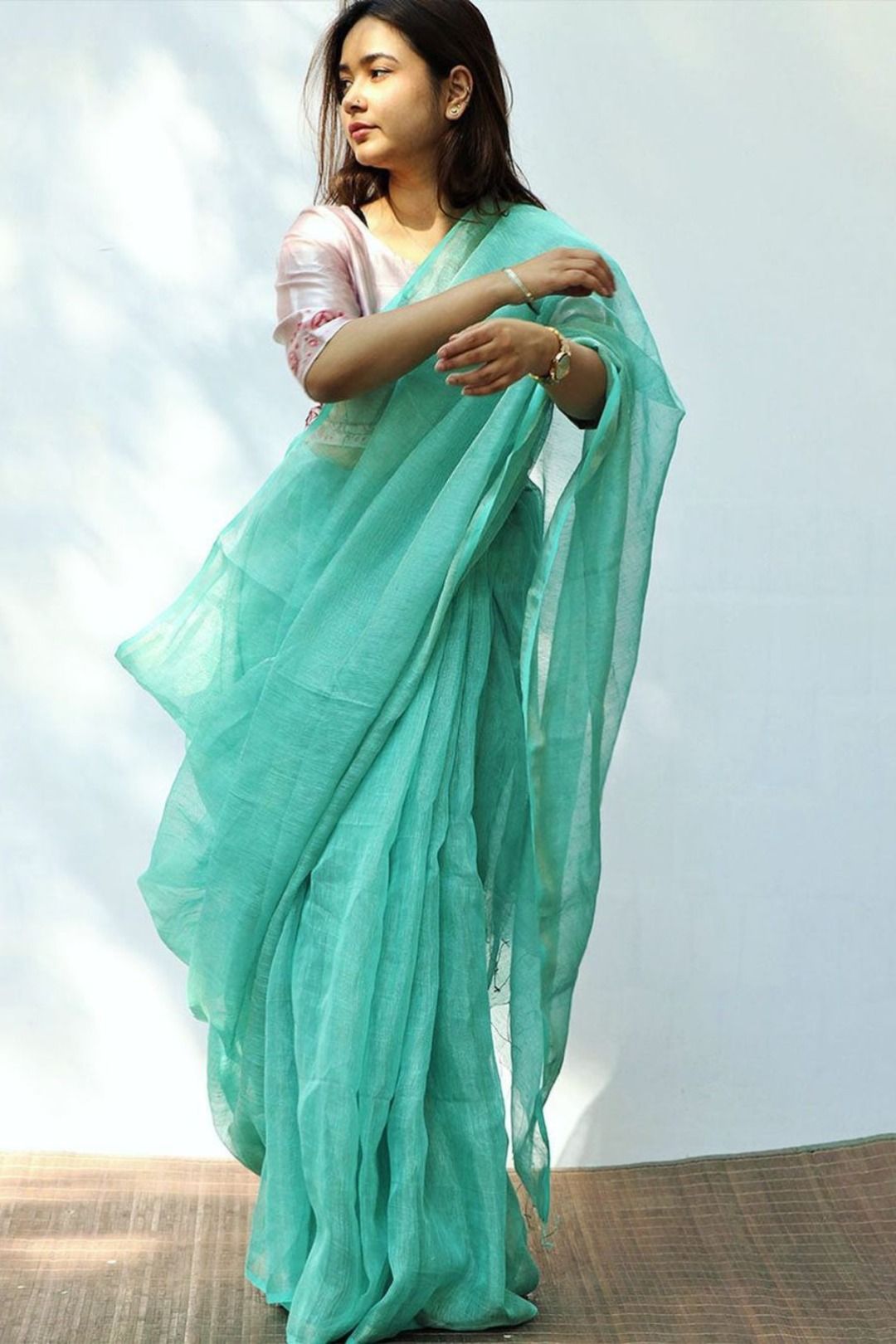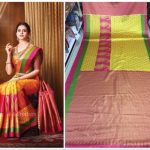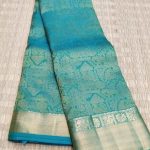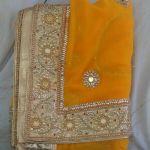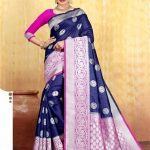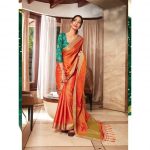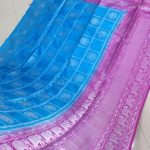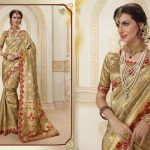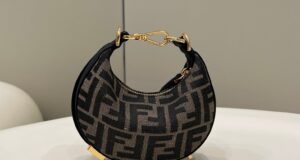Zari is a thread that consists of a basic thread such as pure silk and then winding a pure gold or silver strip. The gold thread is electroplated and then passed through a machine called a brightener, which gives the thread shine and shine. This Zari is then used to make all types of clothing such as real Zari saris, skirts, tops, ghagras, etc.
This art of Zari work has been passed down through generations of weavers who have perfected it. They used pure gold and silver in the old days. Since these precious metals are far too expensive and not easily available, you also have a metallic Zari that is light and shines for longer.
Zari Sarees meaning:
Zari has been used for saris for several years. The latest Zari sarees have the beauty of gold thread and shine. Most Zari saris are used for festive occasions and special days. Depending on the function, you can have thin Zari-edge saris or heavy Zari-saris. Brides would always have Zari Saris as part of their collection. So an Indian woman would have several Zari saris in her closet.
Zari Saree characteristics:
The Zari Saree pictures you see everywhere have one thing in common:
- A golden border along the saree that is either thin or thick. This increases the price of the saree accordingly.
- Zari is working on the Palla des Sarees, which completes the saree look.
- Complicated Zari works in between like motifs are always used for this traditional look.
- Lattice pattern zari affect the body of some saris such as gharchola and bandhani.
What fabrics are used in Zari Sarees:
The full zari saris are usually made of silk, since the silk thread is the base on which the gold thread is wound. The other saris can be cotton sarees, silk, mesh or georgette. These saris look very stylish when Zari is added. Chiffon is another cool and light saree that looks great with Zari work. The Zari Saree design always changes according to the modern woman. You will notice that the edge length is smaller in the latest designs.
Which body shape women are preferred:
A Zari Work Saree design will have all of the intricate handicrafts that make it look elegant. This saree makes you look beautiful and breathtaking. So your body shape won’t be a big problem. Since a saree is the most flattering garment, it looks slim and stylish when worn well. Your body shape shouldn’t matter if you choose a beautiful Zari Saree. Chiffon, silk and georgette are great for fuller women, while cotton and mesh are also great for slimmer women.
Which blouse suits Zari Saris:
An Indian Zari saree goes perfectly with the saree blouse. You can choose any style and cut for your blouse. The latest designs of saree blouses are constantly being used in the fashion scene. Choose the ones you feel comfortable in. Short sleeves, long sleeves or sleeveless are good choices. The zari edge on the blouse is a good choice for the style. You can attach it to the back of the saree or to the sleeve ends.
How to style Zari Sarees:
You can style a Zari Saree in many ways:
- The perfect Indian way is to drape the palla over your left shoulder and leave it loose.
- You can also nail the palla down for a more comfortable feeling. This also shows the Zari border beautifully.
- Drape the saree across the front, also known as the Gujarati style.
- Try other Indian styles to drape the Zari Saree.
- Each of these options only makes the Zari Saree look even more elegant.
A Zari Saree has always been something a young girl wants to wear when she grows. A mother will always buy a special Zari saree for her daughter. A bride has a Zari Saree as a Trousseau collection. A Zari Saree is very important to the Indian. The gold and silver metal wrapped around a silk thread with such great precision is just perfect. Generations have learned this art form and it is getting better every year. A Zari Saree will always be a part of us and the beauty and elegance of it will last forever.
 sanideas.com Fashion Ideas
sanideas.com Fashion Ideas
